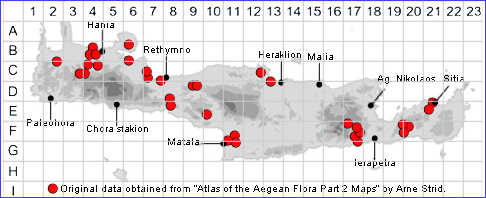

SPECIES DESCRIPTION
DORYCNIUM RECTUM
Family and Genus:- See- LEGUMINOSAE
Common Names:- None
Homotypic Synonyms:- Bonjeanea recta, Lotus rectus. Ortholotus rectus.
Meaning:- Dorycnium (Gr) The Greek physician Dioscorides' name was for a
Convolvulus.
Rectum (L) Straight, upright, erect.
General description:- Erect, much-branched perennial herb or subshrub.
Stems;-
1) Generally 70-130 cm tall. subglabrous to sparsely appressed-pubescent,
internodes mostly longer than the leaves.
Leaves:-
1) 3-5-foliolate, rhachis, 4-11 mm.
a) leaflets, 5 oblong, sparsely appressed-pubescent to glabrescent.
Flowers:-
1) Inflorescence, capitate, with 15-35 flowers.
2) Peduncles, 2-4 cm.
3) Calyx teeth, linear-lanceolate, equalling or longer than the tube.
4) Corolla, small (3.5-5.5 mm), white or sometimes pinkish.
5) Infructescence, stellate.
Fruit:-
1) Legumes, cylindrical, 8-15 x 1.3-2.7 mm, with 5-9 seeds,
a) valves, contorted at maturity.
2) Seeds, 1-1.5 mm, subglobose, dark brown.
Key features:-
1) Legume, 8-15 mm; cylindrical, with 5-9 seeds, valves contoned at maturity.
2) Stems, subglabrous to sparsely appressed-pubescent.
3) Rhachis, 4-11 mm.
Habitat:- Damp habitats by springs, lake shores, water courses and ditches, on
various substrates. 0-600(-900) m.
Distribution:- Coastal areas of Peloponnisos, W mainland Greece and Ionian
Islands. - Widespread in the Mediterranean region and SW Asia. Somewhat
restricted distribution on Crete, mainly west central west and east.
Flowering time:- Apr-July.
Photos by:- Steve Lenton